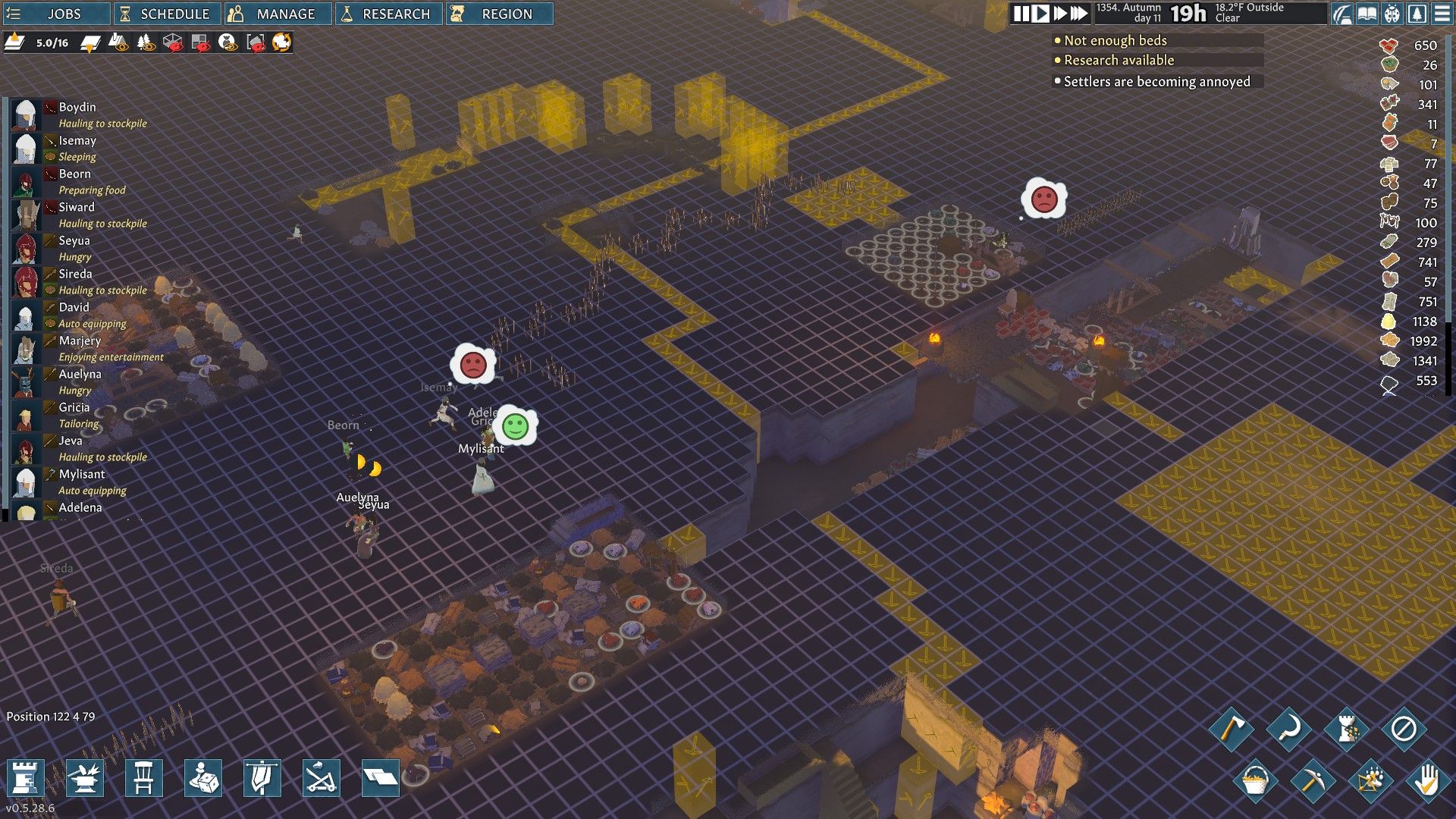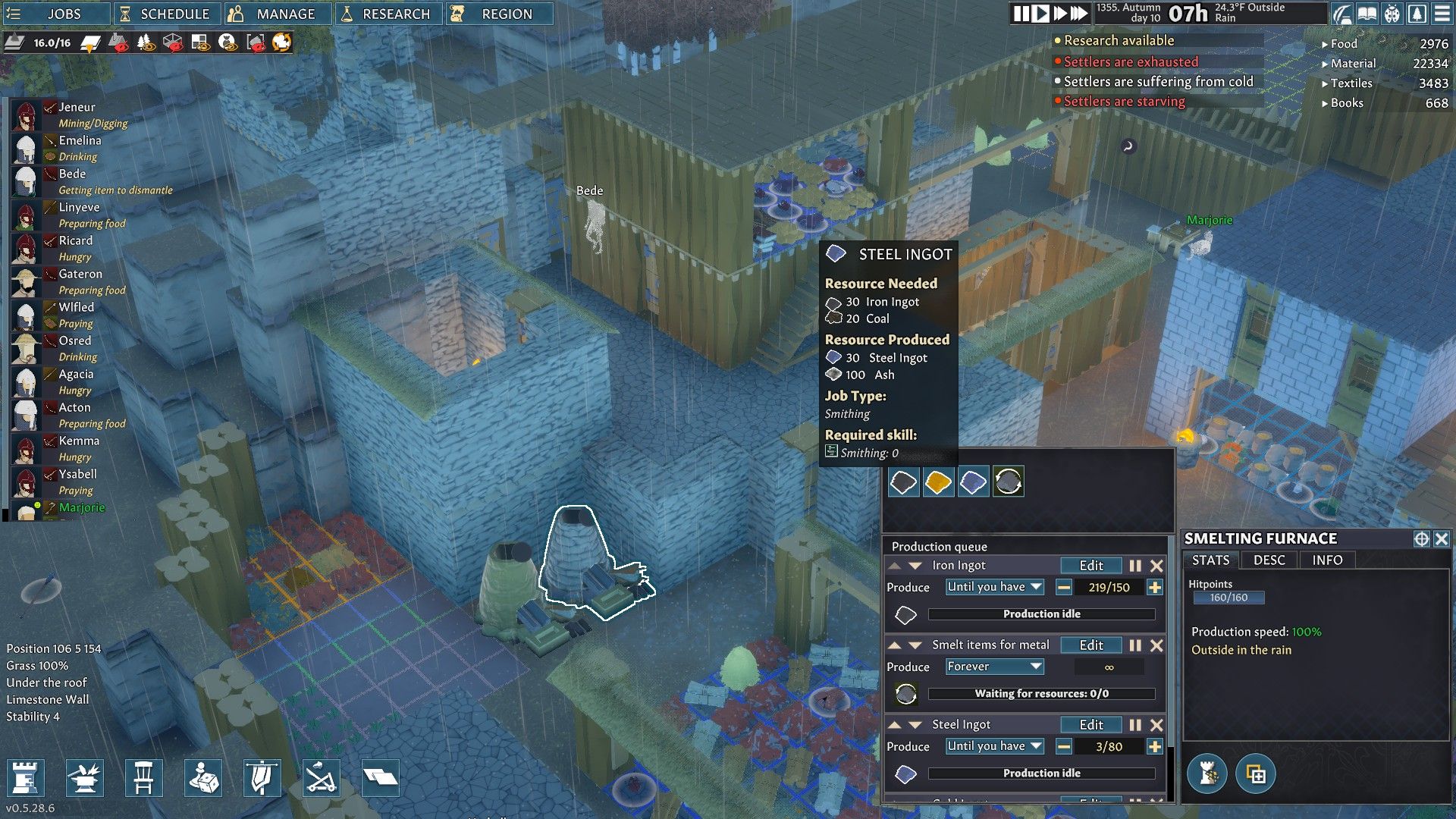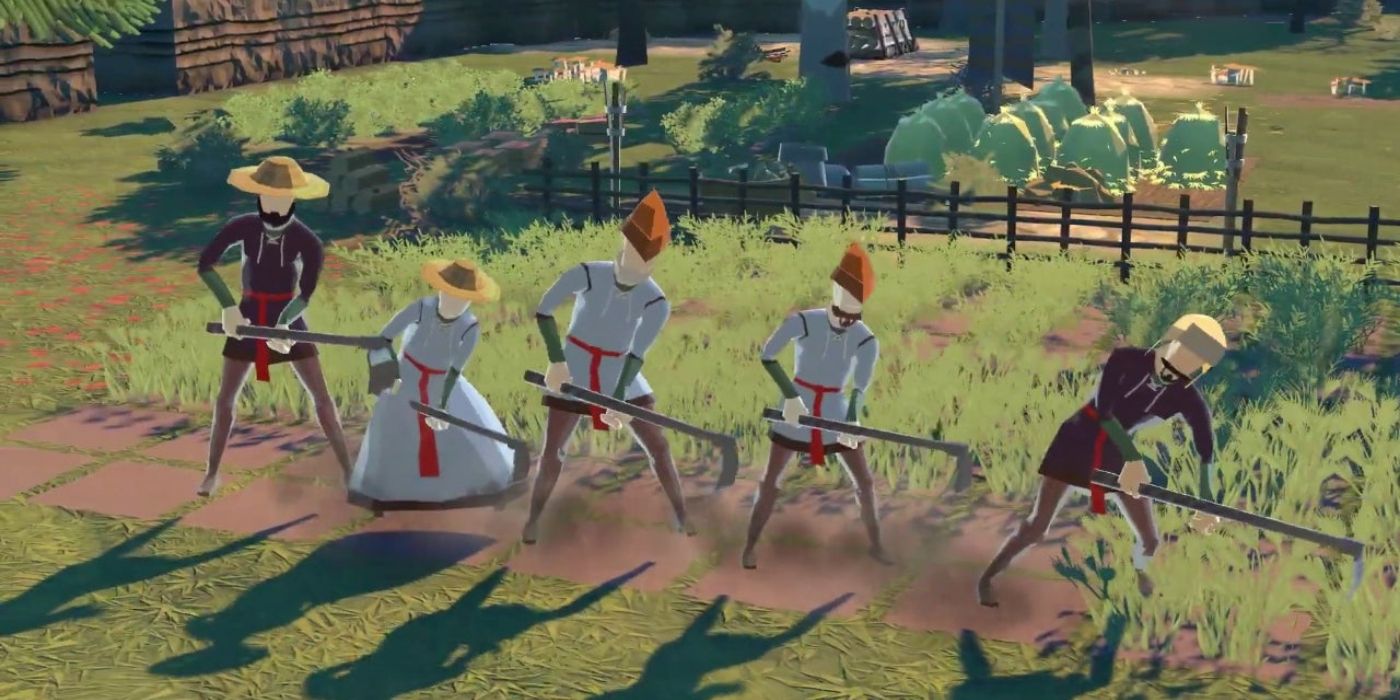Going Medieval may only be in early access, but it has many incredible features that can keep players busy for weeks. Outside farming and warfare, players can also make incredible buildings and plan the lives of an entire region. Developer Foxy Voxel plans for the game to expand to other far-off colonies in a future update.
To build a successful settlement in Going Medieval, players will need lots of raw materials. While chopping trees or gathering loose items is an option, another method is mining and digging up the earth. With this, players will not only have great building blocks, but can use the same resources to make furniture, weapons, and even cook. Here’s everything to know about mining in Going Medieval.
Purpose of Mining in Going Medieval

Mining serves two key functions in Going Medieval: it yields materials that be used in construction and creates new spaces that can be occupied with objects, turned into rooms, or used to travel without risk of being attacked by raiders. The higher a settler’s mining score is, the less likely they will fail at a task and have to repeat it or mangle the raw materials in the process. It helps even more if they have a passion for mining denoted by star symbols next to their skill and any perks that improve overall mining or digging. Great miners should have their digging priority set at first or second place.
The land cannot be renewed or filled naturally once it has been dug up; it can only be replaced with manufactured floors and walls, which can be quite ugly or create some holes that cannot be easily patched. Before any mining job, players should plan a route or design and only mine out the most distant and shallow areas first. Without such planning, settlers may become trapped as they destroy their safe passages, and possible cave-ins from lack of stability can crush rooms and possibly harm residents.
If possible, players should keep some natural walls up, as these can maintain up to three tiles above them in all cardinal directions. If there is a risk of a collapse, players will want to put in wooden beams and constructed walls to be safe. This is especially true if making a basement, as items on the surface level can affect the stability of layers below them.
Mined Materials in Going Medieval

Various construction materials and helpful items will be gained via mining. They will come in set amounts that can be seen when hovering the mouse over a ground tile.
Clay
Clay can be gained in small amounts from dirt, and in some larger quantities from rocky soil, which will also have equal parts limestone. It is risky to dig out the former, as that land can be used for gardening and isn’t very stable when broken up. Unlike wood scaffold stairs, clay stairs require the bottom to be cleared out before settlers will construct them, even if the blueprints look fine. This can make clay stairs sub-optimal when building downward, where clutter is likely. Clay is great for heating up rooms with its 0.93 insulation score per wall. This is great for rooms that can easily get cold, like bedrooms and dining areas. It is less optimal for locations that are at risk of rapidly heating up, like kitchens.
Once a kiln has been built, clay can be forged into clay bricks. This material is great for new walls, merlons, braziers, and making the hearth stoves for any kitchen.
Limestone
When hard rock is mined, it will often yield limestone. This is a reasonably good replacement for wood and has slightly higher insulation at 0.75 per wall and 0.4 per window. Like clay stairs, limestone stairs require an area to be cleared out first before they can be built. Once players construct a stone mason’s bench, every 20 limestone can be converted to limestone bricks. These are needed to make some important structures like the blacksmith forge. Limestone brick floors also offer a speed bonus when traversed, making them great over long distances. Bricks also simply have a nice new aesthetic that players may want for their castles and homes.
Salt
Salt is an ingredient used for preserving vegetables for a long time. Pickled vegetables can last years, but have low nutritional value at only 30. Unlike other materials mined from the land, salt can decay if not properly stored in cool, dry areas, making it less desirable to gather preemptively.

Coal
Coal is a fuel source, just like sticks and wood. Coal has two main appeals over the other two options. First, it can last forever on bare ground and needs no roofs or other shelter. Second, coal is only used for fuel and nothing else, leaving the wooden items free for doors, walls, floors, stairs, shields, and weaponry. It is best to keep coal near both workshops and kitchens for easy access.
Iron
Iron is one of the most important materials in the game. Iron is plentiful on mountains but is often buried underneath limestone on other map types. At first, it will be directly mined as nuggets. Using a smelter, iron nuggets can be reformed into iron ingots. These are key for making tougher doors, the strongest armor, helmets, and close melee weapons like swords, axes, and maces. Once a settler gains 20 ranks in smithing, iron ingots can also be used to make mechanical components in the blacksmith forge. These are needed for crossbows, higher-end traps, and construction of the advanced research table, which allows players to unlock the strongest late-game items. Further down the technology line, iron ingots can be re-smelted into steel ingots which will yield even better equipment.
Silver
Silver is a precious metal easily found on mountain maps, but very rare in valleys. It currently serves no direct purpose in the game but will likely be expanded on in future updates. This will be especially true when the planned caravan and traders feature releases, which is first on Going Medieval‘s development roadmap. Players will want to stock up now for future trade needs.
Gold
Gold is another highly prized metal. Unlike silver, it can be smelted into bricks and used to make incredibly powerful late-game metal weapons and armor. When merchants and trading are added to Going Medieval, gold will likely be a direct trade currency.
Going Medieval is currently in early access on PC.




